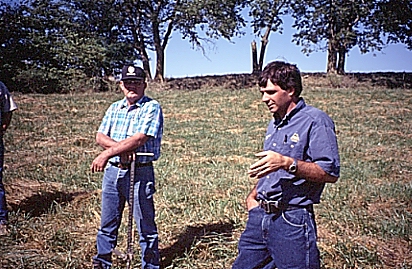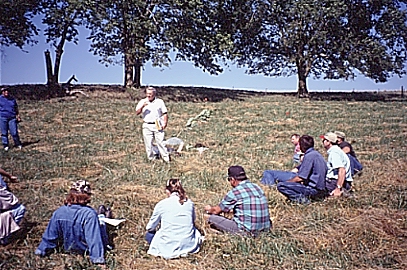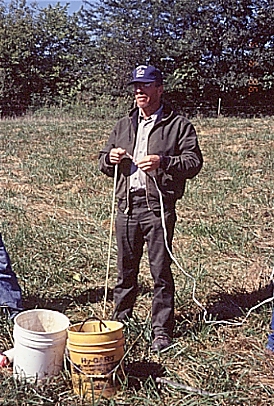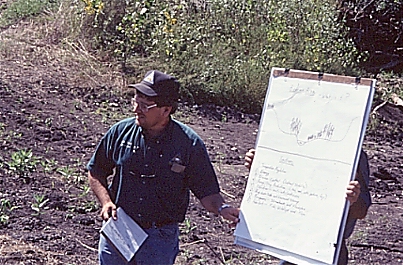Subjects covered during the day included how to begin the planning process, reading and understanding soils, identifying ownership objectives which influence tree and crop selection, and considerations for establishing both riparian buffers and silvopastoral systems. With riparian buffers, understanding the existing conditions at the site, tree selection and grasses for a buffer are important considerations. With silvopastoral design, it is necessary to understand tree species, their spacing, the type of forage used, weed control, fencing and grazing practices.
Lonnie Messbarger, who has actively promoted agroforestry in the region, gave an update on the number of landowners currently using agroforestry and the types of practices they have established.

Sandy Hodge, from the MU Center for Agroforestry, discussed the participatory agroforestry teams in the state and how they can be sources of information. Gene Garrett, director of the Center, led most of the discussion for designing the two practices.

NRCS played an active role in the training. Bill White, a wildlife biologist, talked about tree selection; Jerry Zimmerman did soil sampling and discussed soil identification; and James Mayberry, grazing lands specialist, talked about landowner objectives and some grazing strategies.

MDC resource technician Jim Grace demonstrated some economical fencing options and Kyle Reno, MDC fisheries management biologist, gave an overview of the importance and benefits of riparian buffers.
